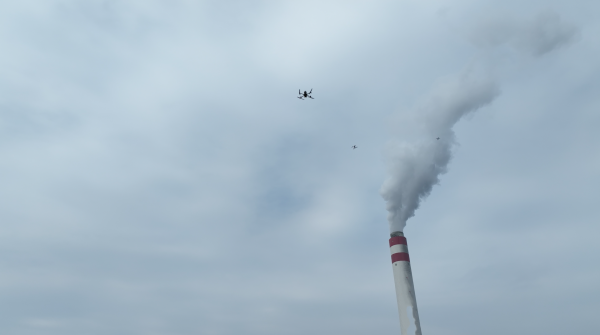In 2021, global anthropogenic CO
2 emissions reached a staggering
40.0±2.9 billion tons, a level that, if compared to a human health checkup, would indicate CO
2 poisoning. The Amazon rainforests, often called the "lungs of the planet," once absorbed about 2 billion tons of CO
2 yearly. To offset the current emissions, it would take the equivalent of 20 "respiratory organs" working simultaneously. Earth's resilience is evident beyond the Amazon. China's vast southwest forests and the world's oceans, covering over 70% of the planet, are also essential carbon sinks, though excess emissions since the Industrial Revolution have led to a troubling global average atmospheric CO
2 concentration nearing 417 ppm by 2022.
Since 2020, many countries have pledged their plans for "carbon peak and carbon neutrality". Managing anthropogenic emissions, especially from major industries, is crucial for addressing global warming and promoting sustainable growth. However, existing emission records lack transparency and accuracy due to limited knowledge of CO2 emissions from cities and key sectors, leading to uncertainty in the global carbon budget and hindering carbon asset management across industries.
Recent research conducted by Dr. YANG Dongxu and his team from the Carbon Neutral Research Centre at the Institute of Atmospheric Physics, Chinese Academy of Sciences (IAP, CAS), is shedding light on the critical issue of anthropogenic carbon dioxide emissions and their impact on the Earth's climate. They conducted a campaign in Shenzhen, Guangdong Province, and Nanning, Guangxi Zhuang Autonomous Region, focusing on monitoring greenhouse gas emissions from urban and vital sectors.
During this campaign, they established the Low-cost UAV Coordinated Carbon Observation Network (LUCCN) equipped with medium-accurate greenhouse gas sensors for CO2 measurements. LUCCN combines ground-based and UAV-based in-situ measurement instruments, enhancing the detection and quantification capability of point source emissions in three dimensions.
A swarm of drones for coordinated observation. (Photo taken by YANG Dongxu)
Dr. YANG Dongxu highlighted that existing and even near future satellite measurements cannot meet the frequent monitoring requirements for anthropogenic emissions due to cloud cover, aerosols, and revisit patterns. Therefore, the development of an adaptable observation network is crucial for accurate monitoring and data collection on greenhouse gas emissions.
Following data collection, conversion of CO
2 concentration data into emission intensity is essential for validating emission inventories. The research utilized the UAV-measured data to calculate emission flux using a cross-sectional flux (CSF) method, resulting in a slightly overestimate than the Open-source Data Inventory for Anthropogenic CO
2 inventory(
ODIAC) due to data limitations associated with UAV in-situ measurements. ODIAC is a global high-resolution emission data product for fossil fuel CO
2 emissions, originally developed under the Greenhouse gas Observing SATellite (GOSAT) project at the National Institute for Environmental Studies (NIES), Japan. This discrepancy underscores the current challenge of UAV-based measurements.
The study showcases LUCCN's requirements and accomplishments and provides insights for future quantitative research into anthropogenic emissions. Nonetheless, the UAV sampling strategy and emission estimation methods require further exploration. "We are now developing a measurement-fed-perception self-adaptation network strategy for the LUCCN system to improve monitoring efficiency, and atmospheric inversion will be applied to enhance emission estimates. These tasks are essential for monitoring anthropogenic emissions," said Dr. YANG Dongxu.
Yang, D. X., and Coauthors, 2023: Toward establishing a Low-cost UAV Coordinated Carbon Observation Network (LUCCN): First integrated campaign in China. Adv. Atmos. Sci., https://doi.org/10.1007/s00376-023-3107-5

